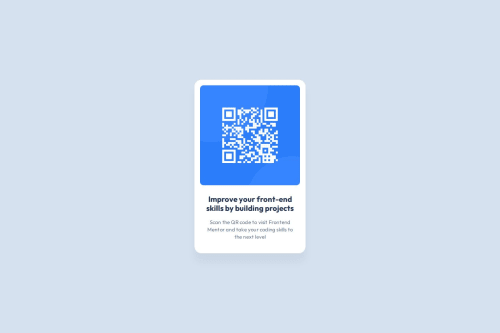Static QR Code UI Component using Semantic HTML and CSS Flexbox

Solution retrospective
I got to learn about CSS flexbox and alignment properties. Structuring my HTML although not yet really optimized.
In this project Im using a fixed width based off from the fixed dimension of the card design from Figma. I found adding padding to the parent container is unnecessary with flexbox (center) unless I want to have explicit horizontal padding in smaller devices and the card itself has adaptable width dimension.
What challenges did you encounter, and how did you overcome them?I am quite unsure about my HTML tags semantically, but looking at some tutorials and the MDN documentation help me figure out some tags I need to use for this project.
What specific areas of your project would you like help with?If someone does look on this solution, I hope to get any feedback regarding how i structure my HTML and if my classes are descriptive enough or makes sense for styling.
Please log in to post a comment
Log in with GitHubCommunity feedback
- @Blackpachamame
Hey your solution is amazing! 🤩
I'll leave you with some comments that might help you improve:
- I don't see any point in placing a
<div class="qr-hero">inside themainwhen themainitself can already serve as a general container. - You can apply
display: blockto the image to remove the white space generated underneath. Although visually in this case it is irrelevant, it helps you better calculate the space with other elements - Use
min-heightandmax-width, this will help the content stretch or shrink if you need to. Unlikeheightandwidthwhich can cause your content to be cut off on certain screens. For example, usemin-height: 100vhinstead ofheight: 100vh - A good practice for naming your CSS classes is to use the BEM methodology. Although you have done it correctly, you can put it into practice next time.
Marked as helpful - I don't see any point in placing a
Join our Discord community
Join thousands of Frontend Mentor community members taking the challenges, sharing resources, helping each other, and chatting about all things front-end!
Join our Discord